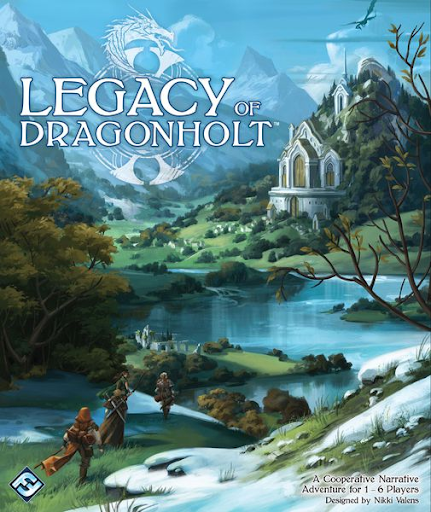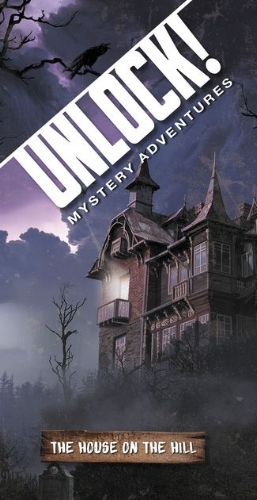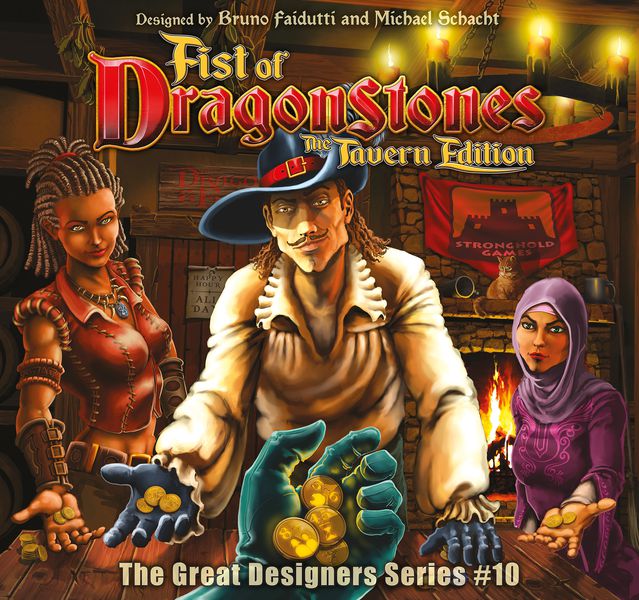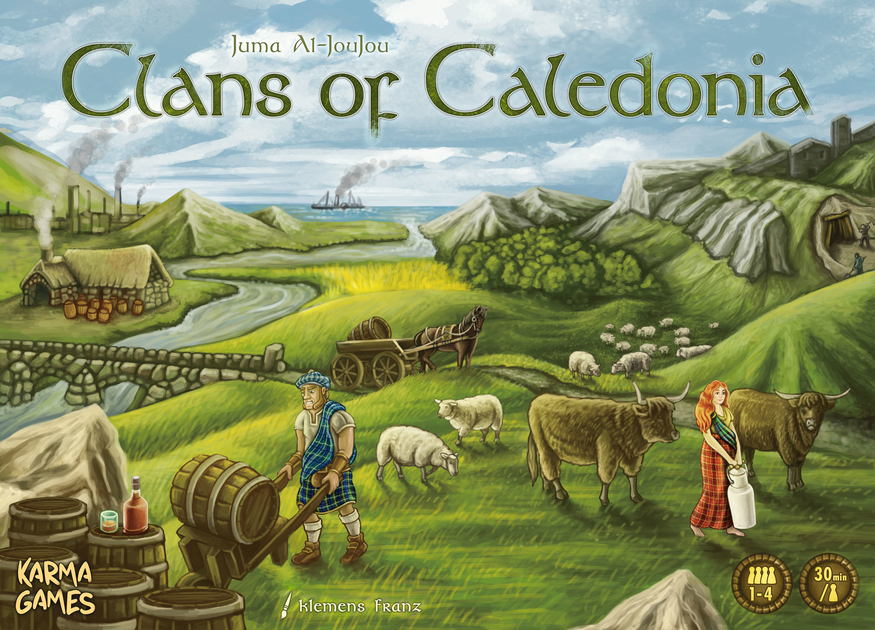Sagrada - The Compulsions of a Holy Roller
Designed by Adrian Adamescu & Daryl Andrews
Artwork by Adrian Adamescu, Daryl Andrews & Peter Wocken
Published by Flood Gate Games 2017
1 - 4 Players ~ 30-60 Minutes
Review by Jack Eddy
Strictly speaking, puzzles are not inherently games, but some games feature puzzles of varying complexity. Then you got Sagrada, which virtually is one cohesive puzzle spread across a psychedelic landscape of candy colors and glorious stained glass illustrations.
I am not very good at Sagrada - in fact, the first time I played at Dice Tower Con 2017, I had to stop the game three separate times to announce that I had committed the cardinal sin of illegal dice placement, eating the lost points and bearing the shame of what should really be a simple ruleset. But every loss has endeared it to me more and more, and it has been a mainstay of continued enjoyment since it’s release.
Colors and Numbers, Numbers and Colors (Gameplay)
Prepare to blow your mind and build your tableau. To start the game, players are given a slotted frame with a 4 by 5 grid. Cards, depicting the plans for different stained glass windows that players build are slotted into these frames, with many of the spaces depicting certain numbers (representing shades) or colors (representing colors). I cannot understate how cool it feels to slot the window cards into the heavy duty and gorgeously ornate frames.
Throughout rounds, players snake-draft dice that one by one are fit into these tableaus, with the catch that each die must be placed orthagonally or diagally next to another dice in the tableau, and if the space has a color or number restriction, you must honor that restriction. Sounds simple enough, right? The snag is that you can never have dice of the same color or number next to one another.
Again, this sounds benign, but I too was once a fool who failed to realize my folly. The player boards in Sagrada are like nooses that we tie around our own necks, as we become increasingly more restricted, desperate, and futile with each die placed. And I kinda super dig it.
Fortunately, reprieve is given via the tool cards. These offer abilities that can be activated using glass beads allotted at the beginning of the game. The more complex of a window you have, the more beads you are granted. Three tools are drawn for each game, but there are a myriad ranging from broadly helpful, to extremely niche. I appreciate the system, though several games I’ve seen a tool card go entirely unused, which feels like an annoying bit of fluff in an otherwise extremely tight game.
Scoring Glass (Points)
Normally, when teaching and reviewing games, I start with the objective, giving players a goal to work toward and the essential context to grasp the remaining rules of the game. But Sagrada is special. Especially during your first few games, your mental energy will primarily be expelled trying to get dice into your tableau, lest you have nasty empty spaces, costing you points at the end of the game. Additionally, Sagrada has no fixed scoring system, instead, players will have both public and personal parameters drawn during setup.
The majority of your points are awarded primarily for the three public goals, ranging from building rows or columns composed of different colors or numbers, or having pairs of certain dice throughout your board, these give nice little dynamic parameters to work with, though the scoring conditions are never so varied as to make your objective feel very different from game to game.
Your final source of points derives from secret cards distributed at the beginning of the game, each showing a color of dice. Upon completion, you gain points equal to the number of pips show on those colors, which is often close to half of your points. While I dig the asymmetry, this is probably my least favorite part of the game. Sure, with 90 dice in the bag, chances are that reds are going to roll evenly throughout, but what happens when they don’t? Or when you can’t reasonably place another red?
Unlike the rest of the game where you feel like you are making smart choices based on how the dice roll, your secret points are instead at the mercy of those dice. This won’t entirely make or break a game, but I wish the secret objectives were a bit more varied and flexible. This goes doubly so with lower player count games where only half or three-quarters of the bag are rolled, meaning that your precious red dice could sit unused at the bottom of the bag..
Honestly, if playing with two players I suggest removing an equal distribution of the 30 you don’t use, so you have a guaranteed even distribution of what’s left in the bag, but here, at The Cardboard Herald, we are in the business of reviewing rules as written, hence why I’m belaboring the point. Granted, even at two players the game is fine without houserulling, but in a game so much about manipulating a tight puzzle, it’s best if you can count on certain tools to work with.
Solitary Confession (Solo Mode)
Everything I just said about imbalance when it comes to the personal scoring conditions? Throw it out the window because in solo you get TWO private objective cards and can pick the one you want to use at the end of the game. Sagrada solo is an abstract puzzle clocking in at about 20 minutes that is delightful, easily repeatable, and addictive.
Basically, you play as normal except that there are only two public objectives, four dice are drawn to draft from every round, and you can once per game per tool card burn a dice from the pool matching the tool’s color to activate its ability. This isn’t just about the tool though, because the objective in the solo game is all about scoring more points than the unused dice, excluding those burnt on these tools.
It’s a gripping race that is emblematic of what I love in a solo game; low hassle, well automated, and both familiar and cleverly distinct compared to the multiplayer experience. If you are at all into crossword puzzles or Sudoku, or want to dip your toes into solo for the first time, consider giving Sagrada’s solo mode a shot.
Depicting Creation & Glory (Presentation, Components & Accessibility)
Sagrada is easily one of the most beautiful games that I’ve ever played. Colorful, eye-catching, and abstract, each array of dice on a tableau looks like a piece of art. Without fail, every new person I’ve introduced to the game has first and foremost commented on it’s beauty, both in visual presentation, but the heavy duty, tactile pieces and the conceptual design.
The flip side of this singularity is that Sagrada is uncompromising in it’s presentation, which limits the accessibility far more than most modern games. The translucent dice that add so much to the stained glass theme? Completely indistinguishable apart from color, making it hard to imagine color blind players being able to play. Similarly, the slots for dice are just so perfect for holding your wonderful bit of psychedelia together, but heaven forbid you (like me) have to use your fat fingers to slot a single die in a tight space, desperately trying not to bump surrounding dice.
I could suggest a multitude of options that would possibly improve the accessibility of this game, both for visibility and fine motor skills / fat finger syndrome, but I feel like in this one instance, those recommendations might be in vein. Sagrada looks and feels so special as is, that it’s hard to imagine that any compromises to fix these issues wouldn’t somehow disrupt it’s delicate beauty (though it is a shame that a solution equally as elegant that felt more inclusive wasn’t found).
Revelation (Final Thoughts)
Sagrada is my kind of puzzle; instantly intuitive, infinitely infuriating. It’s the kind of game that makes you feel clever and inept all at the same time, and the joy comes from the self satisfaction of figuring out your own window with a light touch of player interaction through drafting. And the 45-60 minute playtime (even shorter for 2 players!) makes it the kind of game where sessions typically end with players clamoring for just one more play.
For all my criticisms, Sagrada, more than almost any other game I own, feels singular and complete, which makes those very criticisms easy to forgive. If you dig constructive puzzles or strikingly beautiful games, then I highly recommend this work of art.
Got questions about the game, the review, or the creative process? Let us know any we may tackle it when we publish our audio version with additional thoughts and Q&A on TCbH Reviews.
The Cardboard Herald is funded by the generous support of readers, listeners, and viewers like you. If you'd like to see more content like this, you can support us on Patreon here.
Other Recent Reviews:



































